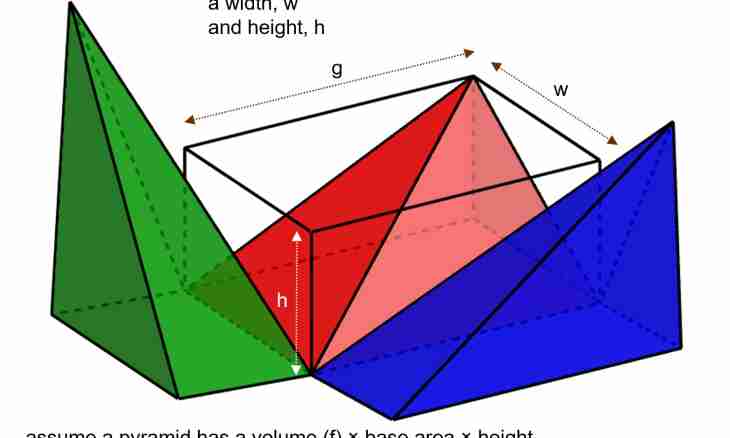Under a parallelepiped the volume geometrical figure, a polyhedron which basis and side sides are parallelograms means. The basis of a parallelepiped is that quadrangle on which this polyhedron visually ""lies"". It is very easy to find parallelepiped volume through its basis.
Instruction
1. As it was told above, the basis of a parallelepiped is the parallelogram. To find parallelepiped volume, it is necessary to find out the area of that parallelogram which lies in the basis. For this purpose, depending on the known data, there are several formulas: S = a*h, where and - the party of a parallelogram, h - height which is carried out to this party; ms = a*b*sinα, where, an and b - the parties of a parallelogram, α - a corner between these parties. Example 1: The parallelogram at which one of the parties is equal to 15 cm, length of height which is carried out to this party, 10 cm is given. Then, to find the area of this figure on the plane, the first of two formulas stated above is applied: S = 10*15 = 150 cm²Ответ: The area of a parallelogram is 150 cm²
2. Now, having dealt with how to find the area of a parallelogram, it is possible to start finding of volume of a parallelepiped. The volume of a parallelepiped can be found on a formula: V = S*h where h is height of this parallelepiped, S is the area of its basis which finding was considered above. It is possible to review an example which would include the task solved above: The area of the basis of a parallelogram of 150 cm², its height, let us assume, of 40 cm, is required to find the volume of this parallelepiped. This problem by means of the formula given above is solved: V = 150*40 = 6000 cm³
3. One of types of a parallelepiped is the rectangular parallelepiped at which side sides and the basis are rectangles. At this figure it is even simpler to find volume, than at a usual direct parallelepiped which finding of volume was considered above: V = a*b*c where a, b, c, is the length, width and height of this parallelepiped. Example: At a rectangular parallelepiped length and width of the basis are 12 cm and 14 cm, length of a side side (height) of 14 cm, is required to calculate figure volume. The problem by it here is solved in the way: V = 12*14*14 = 2352 cm³Ответ: the volume of a rectangular parallelepiped is equal to 2352 cm³

